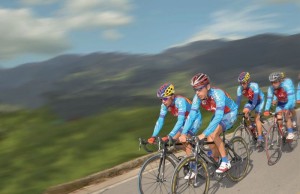Thanks in part to the increasing popularity of cycling as a sport as well as its physiological advantages, riding bikes has become a much more popular form of exercise over the past decade. Now, whether on stationary cycles or out on America’s roadways, millions of people are turning to cycling as their preferred form of cardiovascular exercise.

If you’re interested in getting involved, you’ll want to review a variety of considerations to make sure you’re equipped in both mental and material ways for the road ahead. Cycling is enjoyable at all ages and regardless of your physical fitness level, but you’ll need to invest yourself into the activity if you want to get the most out of it.
The rise of cycling
While cycling is more often seen on television and covered in sports media, the main reason for its spike in popularity is the increasing medical evidence touting the health benefits of cycling. While walking, running and other activities remain popular, some of these activities can increase stress on the body, particularly on the joints. Cycling manages to provide an intense cardio workout without stressing joints — the fluid motion of pedaling and the lack of repetitive impacts between the body and the ground conspire to provide a form of exercise that’s amenable even to people with chronic joint problems.
And thanks to this rise in popularity, competitive bike rides are becoming more common and are being offered at a variety of distances to give riders of all skill levels an opportunity to participate. The new trend is rivaling, if not surpassing, the marathon craze that came before it.
Getting started
Step one in getting involved in cycling requires choosing a specific genre. While road biking may be more common, some riders prefer mountain biking or other off-road biking challenges. Choosing your biking genre will determine which bikes best suit your needs.
You’ll also need to find a bike that fits your measurements perfectly — typically, your inseam is the most important measurement, and your torso length can affect the optimal length of the bike. Most bike shops are able to measure you and direct you toward the optimal bikes for your size.
Once you’ve selected a bike, you’ll need to outfit yourself with accessory equipment that you will inevitably turn to on your rides. In addition to a helmet and cycling shoes, you’ll also want a multi-tool kit that can be carried with you in the event of a breakdown. Consult a bike shop staff member for advice on other equipment that may be worth purchasing up-front.
Training
If you don’t want to ride alone, many communities have biking groups that you can use to make friends and draw fitness support from. In the winter months, check local fitness centers for spinning classes — this can also be a great way to get used to the physical exertion of biking before you hit the road. You might also see whether local bicycling clubs are open to new membership — this could help you connect with riders of a similar skill level. Connecting with other riders also makes these outings fun and feel less like a workout!
Racing
While racing isn’t something you should pursue right off the bat, it’s natural for many riders to want to test themselves in a bona fide competition. Your best bet is to start modestly and register in a race offering a distance you know you can surmount. In other words, don’t sign up for a 100-miler if you’re still gassed after 25.
Once you’ve been riding a while and get comfortable in the saddle, you’ll probably start noticing another great benefit of cycling: the views. Considering how much distance you can cover in a single day, you have the potential to take in a lot of beautiful scenery even in a single ride. That’s one perk that may help you forget about just how much effort you’re putting in to your ride.
Image Source: http://commons.wikimedia.org/wiki/File:EVD-ciclismoruta-006.jpg
Thomas is an avid cycling and health enthusiast. In his spare time, he enjoys blogging on behalf of Sears and other brands he loves.
Originally posted on January 12, 2013 @ 3:49 pm